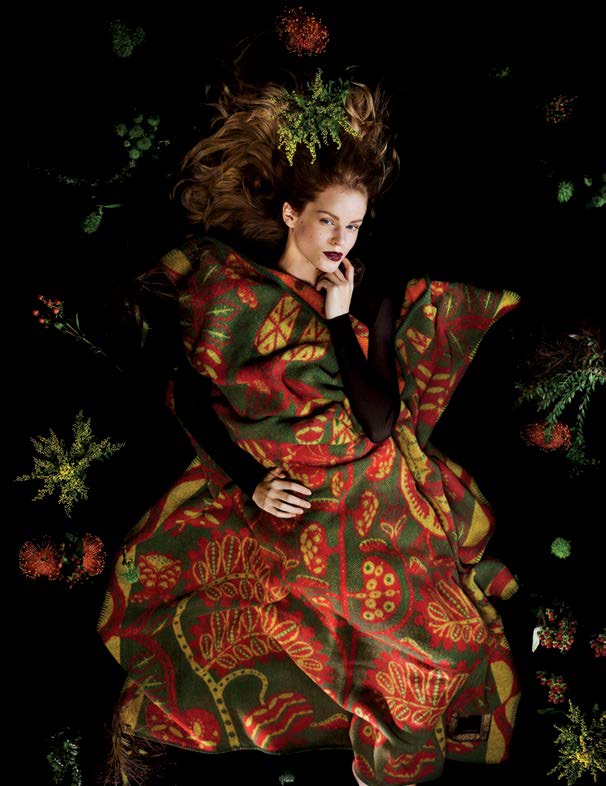Owls and spiders and ladybugs, hares and swans and whales, bats and bees and crickets … The designs of Finnish artist Klaus Haapaniemi are populated with these creatures in their most magical, dazzling forms. Crickets fly through space while spiders show off intricate, jewel-like designs. Foxes kick up their legs in formal suits and birds dance through enchanted night gardens and forests. Conjured from the most luxurious silks, wools, and linens, starring in elegant throws, cushions, and rugs, these fantastical creatures have never been more glamorous.
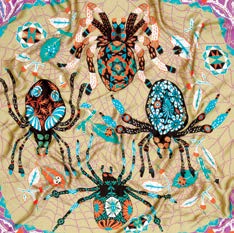 There appears to be nothing the Lahti Institute of Design graduate can’t imagine, including all the costumes for the Finnish National Opera production of The Cunning Little Vixen this year, the sad yet beautiful story exploring the co-existence of animals, humans and the eternal cycle of life. Learn more about Klaus and his designs at Klaush.com.
There appears to be nothing the Lahti Institute of Design graduate can’t imagine, including all the costumes for the Finnish National Opera production of The Cunning Little Vixen this year, the sad yet beautiful story exploring the co-existence of animals, humans and the eternal cycle of life. Learn more about Klaus and his designs at Klaush.com.
Your design approach is influenced by Finnish folklore and culture. Can you talk about that?
I’ve found interesting characters and environments in a number of quite mystical Finnish folk stories, including The Kalevala. But like so many other Finnish children I was brought up in a town that was close to the countryside and full of woods and lakes. It was quite an ideal place to grow up. I was surrounded by nature and almost supernatural beauty and wilderness, which has inspired me as much as the folklore has.
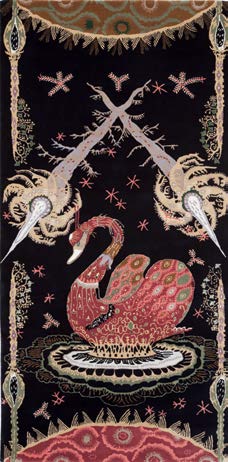
You create a lot of your designs using animal imagery. What is it about the animal world that draws you?
Sometimes I’m inspired by quite ordinary things that seem to lack extraordinariness—but just hide it in their mundanity. Like spiders, or rabbits. I find it quite interesting, how the look of something can easily be misinterpreted because of the deceiving nature of
the subject. But I typically enjoy things that are challenging, in art especially.
I think my subject matter tends to stem from my subconscious. I can become obsessed with whole categories of plants or animals. Lately, I’ve been creating a group of birds for different artworks and prints that have some resemblance in their characteristics. All of them are quite ugly but beautiful at same time. Creating a series like this wasn’t my intention at all, not something I planned; it just all came together in the process, which takes its own path.
You use a lot of bats and spiders and other creatures some consider frightening. Can you tell us about that? Do you see beauty in all creatures?
There is beauty in all animals. It’s just up to the viewer to see it. I’m almost more drawn to the creatures that might be thought of as ugly or scary.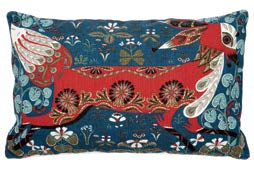
How important are botanical designs to you?
Botanical art is interesting but more so is seeing plants and flowers in their real surroundings. I can spend hours spotting differences in certain color patterns and rhythms by just visiting gardens or meadows to observe the florals and plants. But in the end it’s not a naturalistic or realistic view of these subjects that ends up in my designs or art, but more of an imagined appearance of nature. The designs might reflect something I have seen or memorized in real surroundings but mostly they just come from what exists in
my own mind.
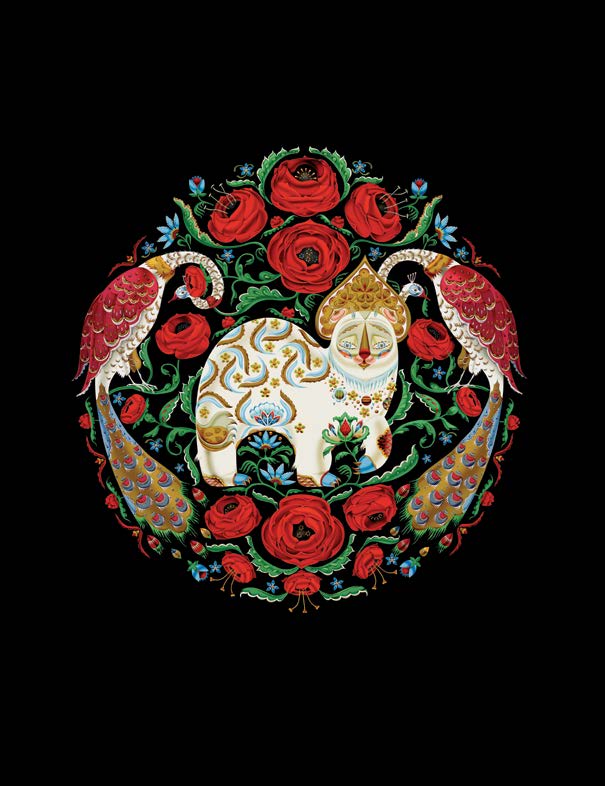
Do you have a favorite design of yours that you can tell us about? And/or a favorite story of how a design came to be?
My favorite design is always the latest one. After I start a new work, I naturally lose interest in what I made earlier and even begin to despise it, or just see wrong details and other things I don’t like. It’s important to get rid of the old ideas. But sometimes getting ideas for objects can just be fun or even start from a joke: One time someone was making a comment about my cat, Putte Alexander, who was running around the flat, and saying something like “the cat is on fire.” The next day I drew a ceramic cat candle holder that is still sold in many places.
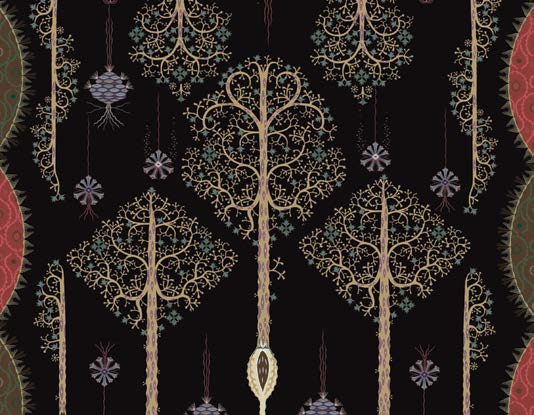
Do you get any of your ideas from dreams?
It has happened but it’s very rare. I think everything would probably be too easy if you could just fill your mind with interesting images every time you go to sleep and then unravel them in your work.
Article From Issue #31 Summer 2015
Subscribe // Order Back Issues




























